We've all heard of at least one incredible social media success story. You know, the story where a brand did so well on social media that it revolutionized their business.
Depop, Made.com, and Dollar Shave Club are just a few examples that come to our mind.
Unfortunately, for every success story, there are innumerable brand profiles that seem to do it just because someone told them they had to. And they’re churning out the same depressingly indistinguishable corporate content that no one engages with on social.
Even their profile pages all look the same, uninspired, and utterly forgettable. That brings us to the point of this article – the social media profile pages that brands use as storefronts, which are supposed to invite the customers to engage and do business with them.
They are rarely discussed, even though they can have a huge influence on the first impressions about a certain brand and provide a treasure trove of information. And when done well, they can even directly influence purchasing decisions.
The only question that needs to be answered is how to do them perfectly, or at least close to perfection?
The answer is a long one, so strap in!
Everything Starts With Strategy
Before we get into different social media networks, we need to talk about a little thing called strategy. Due to reasons we cannot get into now, social media marketing often plays loosely with a brand’s overall marketing strategy or outright ignores it.
And this is provided the brand even has a “traditional,” comprehensive strategy in place.
The first reason why your social media marketing and the various profiles have to be informed by the overall strategy is that this will ensure they have a beneficial effect on the bottom line. Remember, the ultimate goal of social media marketing is not to be cool or fun (although it doesn’t hurt) but to help the brand make more revenue.
Another great thing about following the overarching strategy is that it makes your job much easier. When you consider all of the information you get by consulting strategic documents, it becomes much clearer how to present your brand on social networks.
For instance, you can find information on all of the following in strategic documents:
- The target audience you are engaging with – age, gender, interests, purchasing power, education, sentiments, etc.
- The brand’s selling points – innovative, affordable, luxury, simple, comprehensive, etc.
- Main competitors – what does your brand do better? Whose market share is obtainable?
- Goals – what are you expected to achieve on social media? Which metrics will tell you that you are on the right path?
As you learn more about these, you will find that your social media efforts are all but spelled for you. Your messaging almost writes itself. You just have to fill in the gaps and add creativity to punch through the noise.
The same is true for your social media profile pages. Stand back, look at the big picture, and the ideas will start to flow. Of course, you will also need to consider the opportunities each social media channel provides, as well as its limitations.
This finally brings us to the most popular individual social media channels and how to best set up your brand’s profiles in sync with your strategy.
LinkedIn is often ignored or even mocked in some circles due to its perceived stuffiness and association with old-school suit-wearing profiles and content. However, it can be a fantastic marketing channel for a business, especially in the B2B arena.
If you need some statistics to convince you, check out this article from LinkedIn’s marketing blog. Here are a few main ones:
- The largest share of B2B display ads in the US is on LinkedIn.
- Fifty-five million companies are present on LinkedIn, as well as over 770 million users.
- Brand perception benefits greatly from ads on the platform.
- It is by far the most trusted social media platform (three years in a row).
HubSpot has found that the click-through rates on LinkedIn ads are 60% better than on any other social media network and that the leads are much better as well.
Sure, there are brands that will not benefit from being present on LinkedIn as some others might. Nonetheless, it’s still a good idea to have that presence anyway.
Creating Your LinkedIn Page
To start off, your brand will need a LinkedIn Business Page. The good news is that this is super easy to do, and here’s how:
- Near the top right corner of your homepage, you will find a button Work.
- When you click on it, you will get a drop-down menu.
- At the very bottom of the menu, you will find the Create a company page option.
- From there, you can select the size of your company. Then onwards, it’s as straightforward as it can get. There’s even a super-helpful page preview section where you will see what your page will look like.
There are a few things to keep in mind when filling in the basic information about your company.
Logo
Firstly, make sure to add a logo (300 (w) x 300 (h) pixels). Without it, the chances are your company will look fake or extremely untrustworthy, especially considering that it will appear on your employees’ profiles as well.
Tagline
Secondly, you are given a chance to add a short tagline – use it. You might already have one ready, and if you don’t, you can find great advice for creating your tagline.
Cover Picture
Once you’re done with the basics, it’s time to spruce up your profile page, and it all starts with a great cover picture (1536 (w) x 768 (h) pixels). Different brands choose to do different things with their cover picture.
For example, Pernod Ricard decided to show off the many brands they have under their wing:

Image Source: LinkedIn
It’s really hard not to think, “Wow, that’s theirs too?!”
Most sporting apparel companies (and clothing companies in general) will show people wearing their products, like Adidas or even Gucci:

Image Source: LinkedIn

Image Source: LinkedIn
Other brands may go for a more conceptual approach, displaying some unique characteristics of their brand. For example, Vivify Ideas uses a 1950s-style space exploration illustration that tells potential clients that they are not afraid of software development challenges:

Image Source: LinkedIn
You do what makes sense for your brand.
About Us
The About us section is also very important. It allows you to:
- Tell a story about your brand
- Tell people how you can help them
- Show off your brand’s successes
- Use smart SEO copy to boost your brand’s visibility in LinkedIn’s search results
Once again, it will come down to what your brand needs from this section. For instance, larger companies will usually show off their history and numbers that make them such reputable giants. For example, here’s how Schaeffler did it:

Image Source: LinkedIn
Less gigantic companies that are using LinkedIn primarily as a marketing and sales channel will tell their potential customers how they can help them. They’ll focus on addressing consumers’ pain points, like Mixam does:
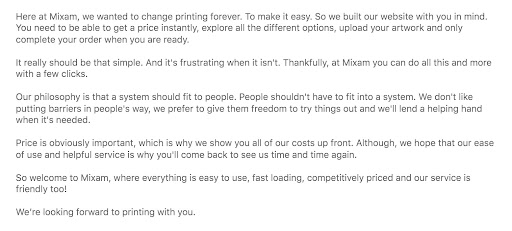
Image Source: LinkedIn
Many companies today want to share with the world their commitment to sustainability and other causes. TomTom is a good example of that:

Image Source: LinkedIn
It’s about what you are trying to achieve on LinkedIn. Also, don’t forget to add specialties to this page. You can use this as a sort of keyword section that will help people find your company.
Life
Keep in mind that LinkedIn is also a major recruitment and employer branding tool. More & more people are finding their next jobs on this network. With the Life section, you can really use it to its full potential, sharing insights from within the company, showing off different teams, and more. Nike does this very well:

Image Source: LinkedIn
If you have videos that you think can help your brand achieve its goals on LinkedIn, don’t be afraid to upload them here too.
Building Your Following
Of course, you’ll need followers for your brand. While it can be difficult to get the ball rolling, it can be done with a few smart tactics:
- Optimize for SEO.
- Encourage your employees to spread the word.
- Join conversations and groups.
- Add a LinkedIn button on your website.
- Try to reach influencers.
The folks from LinkedIn go into more detail about this.
Bonus: Statusbrew helps you incorporate social media management into your workflows and improve your online presence on LinkedIn. You can perform audience targeting on LinkedIn with Statusbrew.
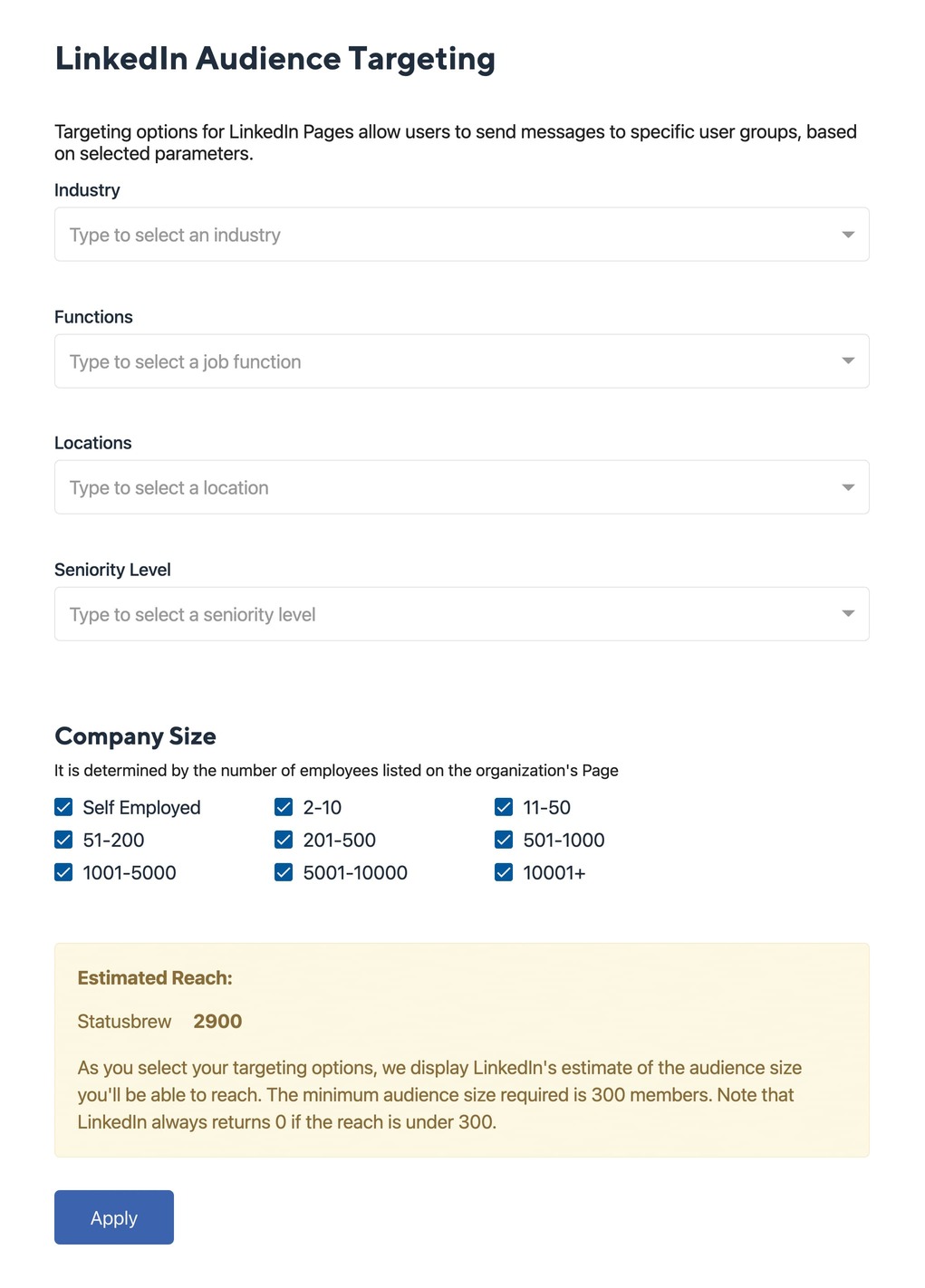
Facebook has taken a few PR hits in the last couple of years, and with good reason. That being said, it is still a juggernaut in terms of users, average time spent on the network, and more.
As a result, not having a business page on Facebook is basically shooting yourself in the foot. For certain types of companies, mostly local B2C ones, it means shooting both feet.
Creating Your Facebook Page
Facebook’s process for creating a business page is simple. They really take your hand and walk you through it in the most logical possible way. Simply go to Facebook Create Page and follow the instructions.
Profile And Cover Images
After entering the name of the company, selecting a few categories, and adding a short (255 characters) description, it’s time to think about visuals.
Your profile photo will be your company logo. It is a 170x170 pixels image, but keep in mind that it will be cropped to a circle. You’ll want to make sure that the important stuff is in the center of the image. For example, don’t do this:
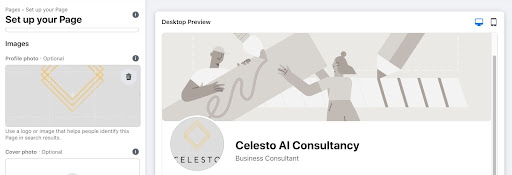
Image Source: Facebook
As for the Facebook cover photo, the same rules apply as with LinkedIn – it all depends on what you want to achieve with it. Perhaps you just want an extension of your visual branding? Perhaps you have products that you want to show off? Maybe you want to feature a photo with additional messages?
About Us
The About us page is once again to be guided by your brand’s strategy. How do you want to sound – serious, playful, professional, helpful? Do you want to talk about your products and services? Do you have mind-blowing stats to share? What is the ultimate goal of your Facebook presence?
Addressing FAQs
With Facebook, it’s all about availability and speed. This is why, for one, you need to set up your location, working hours, and as many various contact methods as you can muster.
For instance, check out the widget that Orizaba Original added to their profile page, the Ask Orizaba Original section. By simply clicking on the Ask button next to the most frequently asked questions, you can immediately start a conversation with their team. Or, you can even write in your question, click Ask, and take it from there.
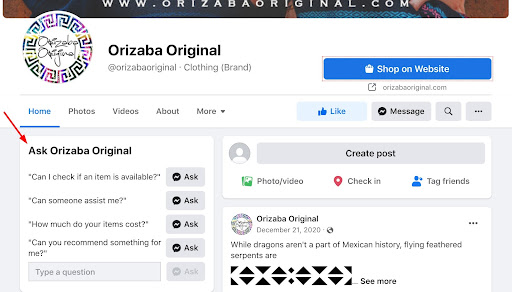
Image Source: Facebook
Remember, it’s all about instant communication and interaction.
Reviews
Another welcome addition to your company profile on Facebook are the reviews. Take a look at how Scott’s Cheap Flights understands that the competition is fierce, so they feature their reviews prominently.
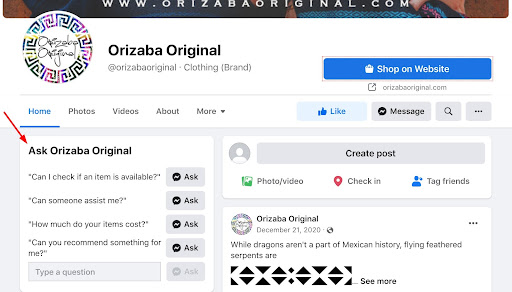
Image Source: Facebook
And they have a TON of them: short ones, long ones, the good and the bad – everything. The goal is to provide plenty of social proof for your potential customers and build trust.
Of course, once again, the more followers you have, the better.
Bonus: Statusbrew helps you manage Facebook ad comments for your business pages. You can sync ad comments for your Facebook brand pages and blaze through them with management and moderation features built right into Statusbrew.
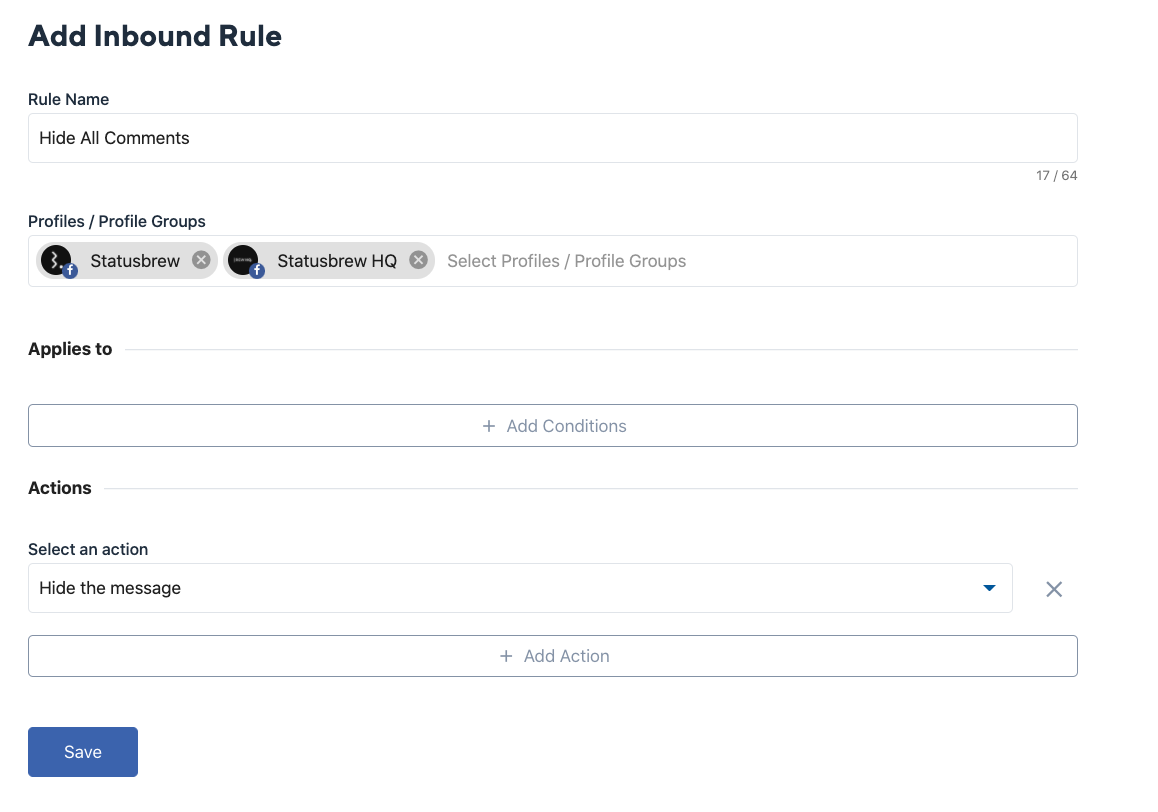
Twitter has been trying to establish itself as a marketing channel since forever, it seems. The fact remains that it still hasn’t really found an effective way to fight the biggest players in the paid ads market, which is where the money is.
However, this does not mean that there are no companies that have done really well on Twitter, promoting their products/services organically, running good paid Twitter ads, providing great customer service, and doing an overall stellar job on this social network.
Creating Your Twitter Page
That being said, when we’re talking about your business profile page on Twitter, we’re talking about far less real estate than on LinkedIn or Facebook. It is the very nature of this social network that limits your profile to bare essentials.
Logo and Header Photo
Once again, you get the chance to feature your logo, as well as a header photo where you can further show off your brand. Skillcrush does this particularly effectively. They’ve shown their users in action and added effective copy to make the most out of limited real estate.
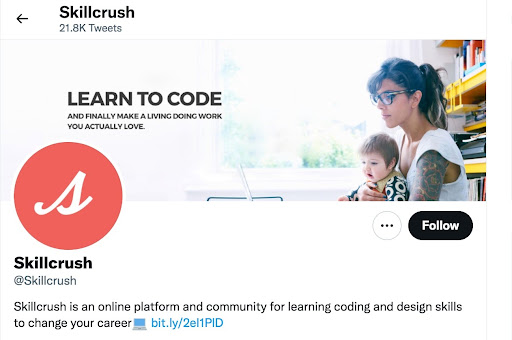
Image Source: Twitter
Providing More Info on Your Page
Some brands, like Chess24, use Linktree to provide more clickable options to their followers. This does include another step, but sometimes it’s worth it.
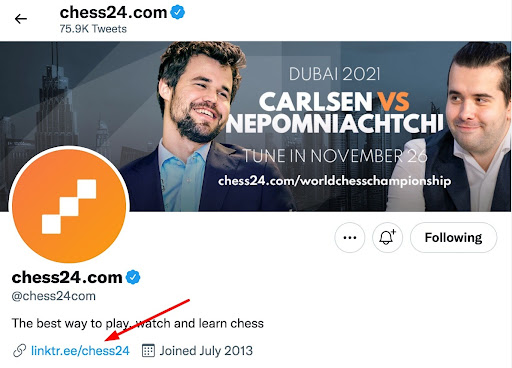
Image Source: Twitter
Another “hack” that will allow you to feature more content on your profile page is the pinned tweet option. Here, you can choose a single tweet that will always be at the top of your brand’s timeline. Spores does this well, always making sure the freshest and most pertinent content is pinned for everyone to see:
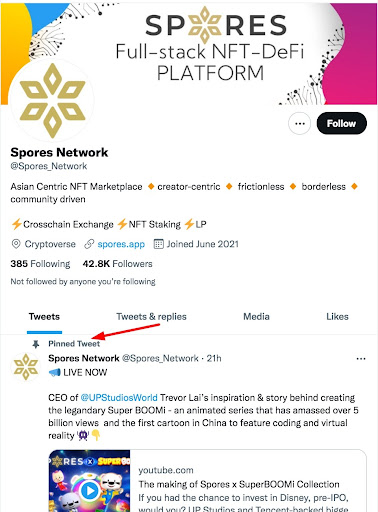
Image Source: Twitter
Getting Your Profile Verified
For the purposes of trustworthiness, you should also try and get the famed verified blue checkmark. There are a number of factors that will decide whether you are eligible for verification. But if it’s any consolation, it’s much easier for brands to do it than for individuals.
Many of the prerequisites are easily met – including a complete profile, an email and phone number, and regular activity. However, there is the small issue of being in the “0.05% of active accounts located in the same geographic region” in terms of follower count. There’s another reason to get a ton of followers.
Once you think you are eligible, it’s really simple to ask Twitter to consider your request for verification:
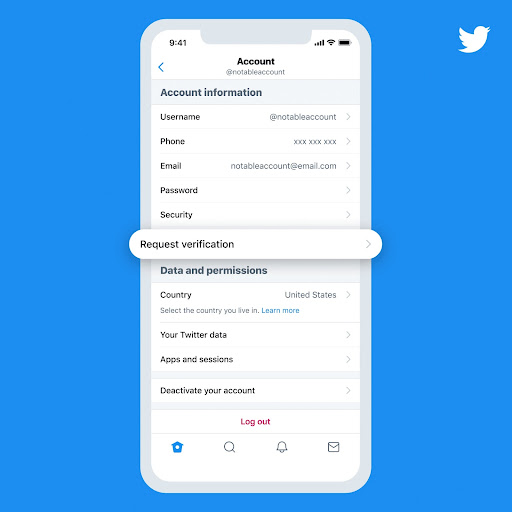
Image Source: Twitter
Bonus: With Statusbrew's built-in features such as social listening, brand keywords and hashtag insights, you can give a boost to your Twitter efforts. Statusbrew allows you to execute social strategies with your team on Twitter and visualize success.
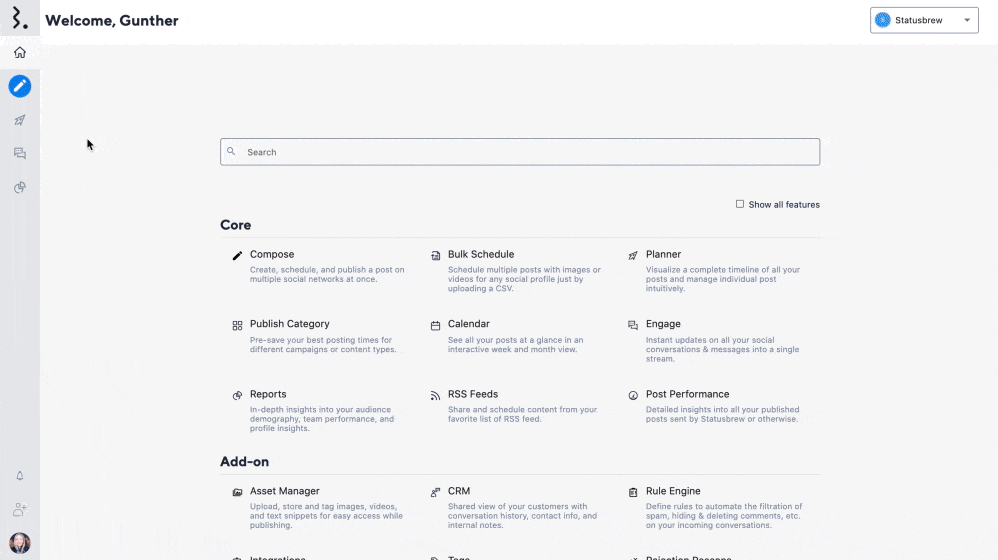
If you thought that your brand profile page real estate was limited on Twitter, just wait till you see how little you have to work with on Instagram.
Creating Your Instagram Page
You get to feature your logo, the name of your company, and a short bio describing it. Oh, and also, you only get to include one link in your bio.
And while this may seem like very, very little real estate to work with, the fact is that brands come up with all kinds of ways to emphasize the most important aspects of their business and send a very clear message to (potential) customers.
Take, for example, Adidas and Puma – two companies in the same industry, started by brothers, even headquartered in the same small German town.
Adidas clearly states that its ultimate mission is to change the world through sports. They follow it with their famous #ImpossibleIsNothing hashtag, of course.
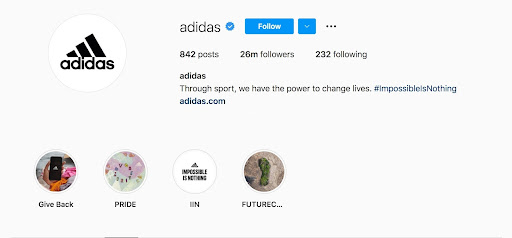
Image Source: Instagram
Puma, while having a less recognizable hashtag, does a really cool power move. The brand simply states that it was established in 1948.

Image Source: Instagram
“Who has been around as long as we have?”
Sometimes the simplest ideas are the most effective.
Deciding on that one link is definitely one of the most difficult decisions when creating a brand Instagram page. Do you just link to your website URL like the really big players do? Do you use Linktree to give your followers more options? Do you create specific landing pages depending on your changing focus?
Once again, consult your strategy. You might find more answers there than you expected.
Bonus: Statusbrew's Reports Lab feature allows you to get deep insights into the Instagram Analytics. You get the chance to analyze each like and comment and make informed decisions to improve your Instagram marketing strategy.
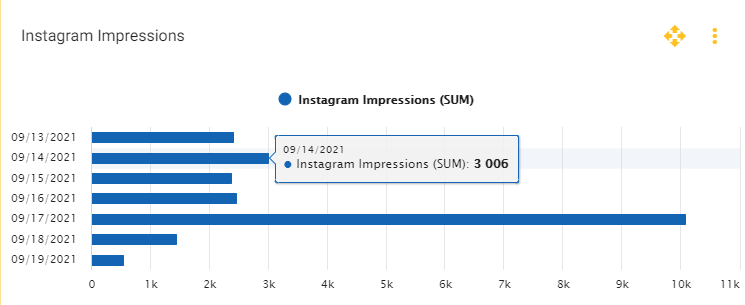
Instagram Stories
Considering how few options you are given when it comes to providing info on your profile page, Instagram Stories have become very important. They are always above the fold, and they provide you with additional opportunities to share valuable content.
Since this article is not concerned with content creation, we will only mention that many brands use an overall visual identity for their story icons, making them more striking and professional-looking. NikonUSA is a great example of this:
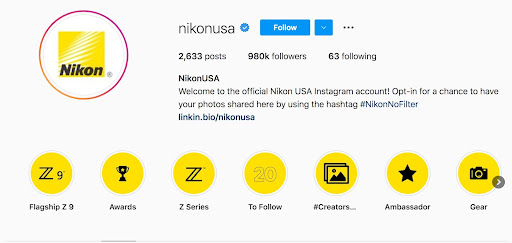
Image Source: Instagram
Don’t you just love those black-on-yellow icons?
Closing Word
Setting up a successful social media profile page can take some work and juggling of priorities. But if you understand the basics, you’ll have no problem turning them into a weapon of itself, regardless of the content you share. (Of course, this doesn’t mean your content doesn’t matter. It matters. A lot.)
Looking for a social analytics tool to track the performance of your social media marketing campaign? Try Statusbrew. With several ready-to-use reporting templates and total flexibility to customize these reports, Statusbrew will help you determine whether your social initiatives have led to positive results and where adjustments are needed to strengthen your marketing campaigns - in no time.
Statusbrew is an all in one social media management tool that supports Facebook, Instagram, Twitter, Linkedin, YouTube, and even Google My Business.

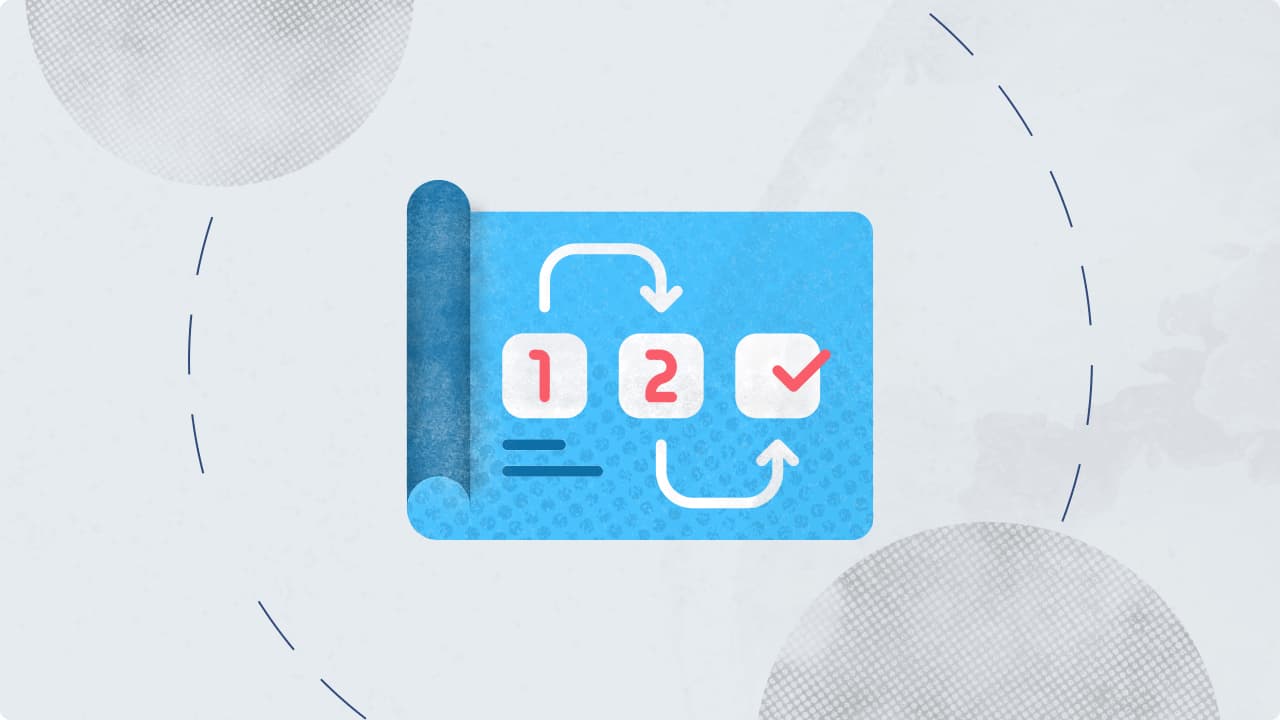


Explore the Statusbrew range of social media tools
Cancel anytime!